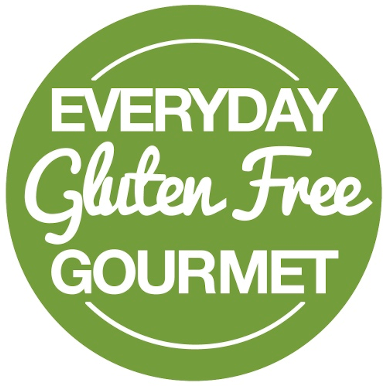How To Make Gluten Free Gravy is a problem gluten free cooks need to solve right away. Everyone needs to learn the tricks to thicken sauces, remake family favourites and be able to try new recipes that perhaps aren't written for gluten free.

Wheat flour thickens sauces and makes rich gravy but gluten free flours do not absorb fat or liquid as well as wheat flour does. For that reason gluten free gravy and sauces are not made with a gluten free flour blend.
We all collect recipes over time so there is no one right method and there's always another way to remake old recipes. I use cornstarch to thicken the gravy for Beef Rouladen and Salisbury Steak yet I use masa harina for the Ancho chile gravy I put on poutine.
Thickening Agents
- Cornstarch
- Tapioca starch
- Potato starch
- Masa harina, corn flour treated with lime that is used to make tamales, tortillas and many Latin American specialties.
- Sweet rice flour, sold as glutinous rice flour and made from a sticky variety of rice.
Thickening with a Gluten Free Flour Blend
Some recipes replace wheat flour with a gluten free flour blend to thicken sauces. This is a tricky option because there are so many different flour blends. The percentage of starch and the different properties of each flour in a blend all affect the final result.
If you want to use a gluten free flour blend it will be by trial and error. Pay attention to the way it works until you find what you want. To learn more about the properties of the specific flours you're using check out my 12-part series on How To Use Gluten Free Flour. It includes 21 different flours, starches and binders beginning with How To Use Rice Flour.
Roux vs Slurry
Rich thick gravy, soups and stews can all be thickened with a roux or a slurry. I have recipes that use both of these methods.
A roux is a mixture of cornstarch or flour and fat. They are combined at the start of the cooking process. Simply melt butter or oil, sprinkle cornstarch on top and cook for a few minutes to ensure the raw taste disappears. Liquid is then added to the roux and thickens as they are stirred.
I use this is the method to make white sauce and all the variations that include cheese.
A slurry is made by mixing equal parts of cornstarch and water. This slurry is then added to the dish near the end of the cooking time. I use this method to thicken the sauce in many Asian recipes. That includes Lion's Head Meatballs, my easy vegetable stir fry, Salmon with Chinese Pesto and more.
With this method you can add only half of the slurry, assess the thickness of the sauce, then add more only if needed.
Equipment
A gravy separator isn't even necessary but it is convenient if you make large amounts of gravy. I don't use it often but I have one. It lives inside my turkey roaster above the fridge so it's easy to grab, yet I really only use it when I make turkey dinner with Ancho chile gravy.
Gluten free cooks need options and often have to accommodate other food restrictions and preferences. So whether you use a roux or a slurry, you can make delicious gravy and all those saucy recipes you love.
Let me know in the comments below if you have any gravy questions or tips to share.
__________________________________________________________________________
New here? Subscribe and get your FREE resource, the tips I wish I knew when I started cooking gluten free.
Looking for more help with gluten-free cooking? Check out our Cooking Classes.
_________________________________________________________________________

















Leave a Reply